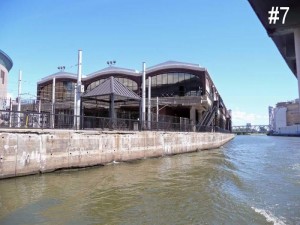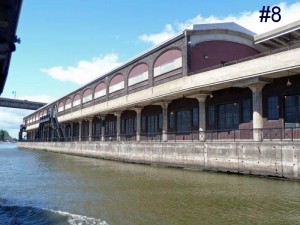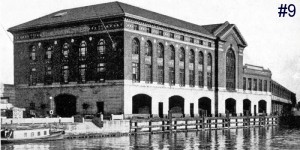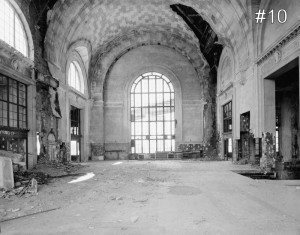Field Trip Report: Part 4 of 7 – New Jersey, Pennsylvania and New York

 Click on each image for a closer look!
Click on each image for a closer look!
A day-long drive north from Altoona brought us to Buffalo, New York, once the second busiest railroad center in the United States after Chicago. In 1927 there were 13 different railroads serving Buffalo, including the CPR, CNR, Grand Trunk and TH&B. All passengers traveling directly from Toronto to points in the eastern U.S. passed through Buffalo. In some respects, Buffalo is a sad remnant of what it once was, with a population half that of 1950 and containing several abandoned buildings that are architectural treasures, but no capital available to restore or adapt them to other uses. Many Torontonians unfortunately have a rather jaded view of the city based on some of the execrable local newscasts originating from Buffalo that we see on television.
However, it is still the second largest city in New York State and has an active cultural life and concern for its heritage.
In the two days I was there, I was able to take in three heritage tours, all provided by local heritage advocates who were proud of their city and its history. A boat tour of the Buffalo River brought us past the former Delaware, Lackawanna & Western passenger terminal or what was left of it. The headhouse was demolished in 1979, although the train shed is now used as a maintenance and storage facility for the Metro Rail system.
#7- The former Lackawanna train shed now used as a light rail depot. The 1917 headhouse occupied the foreground.
#8- The east end of the train shed from the Buffalo River. This was also a Bush train shed built on top of the freight shed which was underneath.
#9- The Lackawanna headhouse demolished in 1979. Interestingly, I had explored the interior of this abandoned building in 1965 but unfortunately did not take any photographs. (archive photo)
#10- This was the interior of the headhouse a few years after I explored it. It was abandoned by the Lackawanna Railroad in 1962.
More information on this structure can be found by clicking here.
Click here to read Part 5.
To return to the first installment of this news posting, click here.
Posting and pictures by Derek Boles, TRHA Historian



